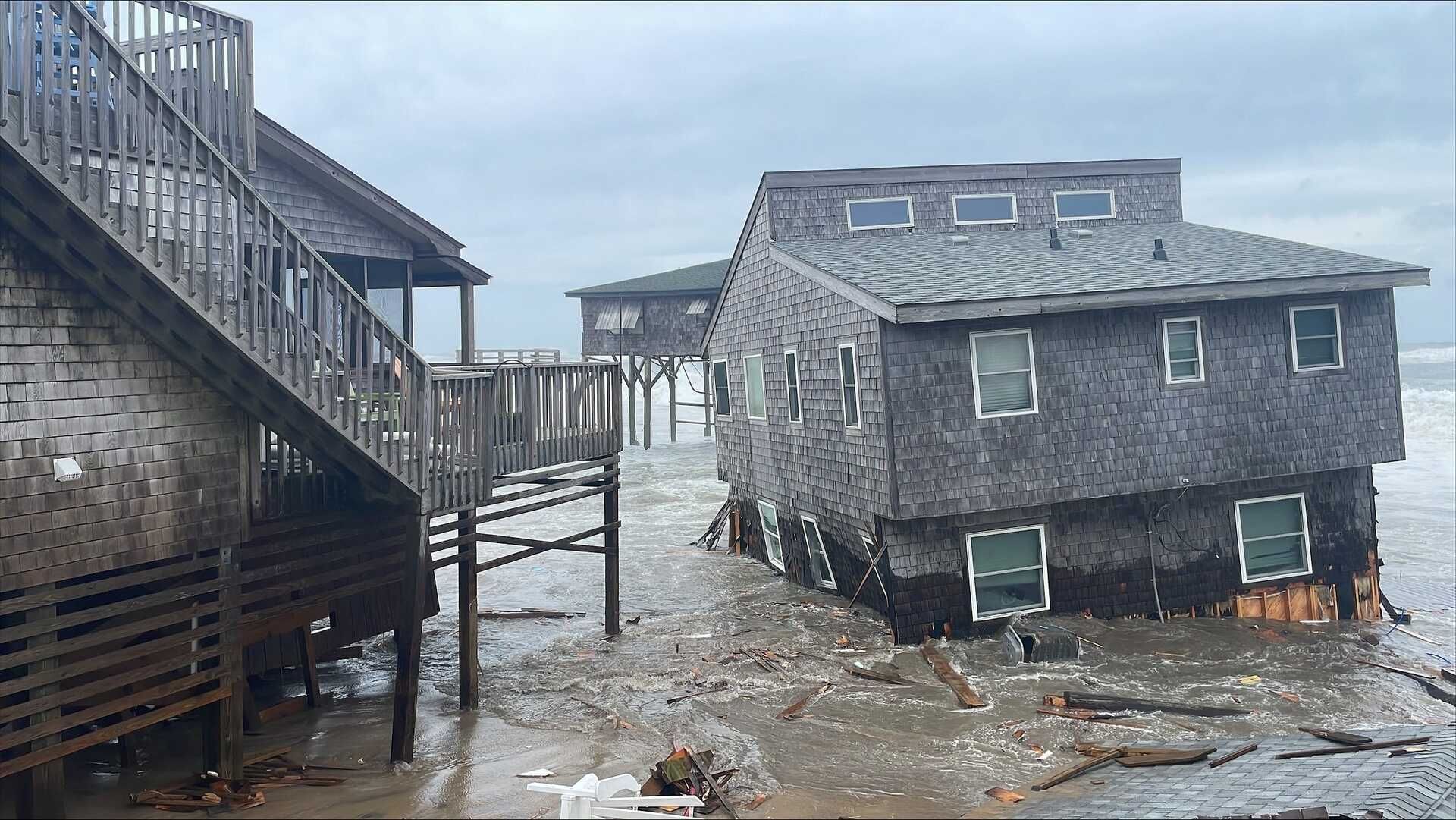
Over the last few weeks, nine oceanfront houses on the Outer Banks have collapsed. In fact, on September 30th, five of them went down in just a 45 minute span.
So, um, why? “Because we live on a barrier island and barrier islands naturally move west,” says Sam Walker, a longtime Outer Banks journalist. “When you put structures on barrier islands they eventually end up in the ocean. It’s as simple as that.”
So yes, that’s the underlying problem. But why so many? Why now? Why is it happening in Buxton which, before last month, hadn’t seen an oceanfront house collapse in 30 years?
You also may be wondering: Why doesn’t somebody—the government, the owner, the insurance company—tear down these houses before they make a giant mess? Why are they even on the beach? Did someone allow them to build there? Who owns those houses? And who’s responsible for cleaning them up once they spread debris along miles and miles of seashore?
I touched on some of these topics a few years ago, but in light of nine houses falling into the ocean in just a two week span, I got Sam Walker on the horn to offer his perspective. We talked about big picture stuff (erosion) and got into the details (like what happens to your property rights after the ocean eats your property).
You can listen to our conversation here on Apple Podcasts and Spotify, or watch it below on YouTube.
Highlights
On the location: “The problem we’ve got now is that where the island wants to move to the west is in a spot that is highly developed. And right now that appears to be north of the Cape Hatteras lighthouse in the village of Buxton. Similar situation up in Rodanthe. And right now, the problem is that fact that we got hurricane in a month ago, and then we get the the triple play: Hurricane Humberto, Hurricane Imelda, and then a strong northeast wind. And it’s just wiped out beach. It’s wiped out sand that’s in the offshore that does the job of absorbing waves. And the houses are just falling in. And that’s the simple part of it. It’s a lot more complex: From regulatory issues to geology to weather.”
Why you can’t do much to protect those houses in North Carolina: “In the early 1970s is when people were considering doing the New Jersey-ization of North Carolina’s beaches, and start putting up jetties, boardwalks, and rocks to harden structures. The Coastal Area Management Act was passed by the legislature in the ‘70s that created the Division of Coastal Management. It also created a state law that you cannot put hardened structures on our beaches like everywhere else up in the north of us. And that created the uniqueness of North Carolina’s beaches and especially the Outer Banks, because it attracted people to come here.
“But it also created rules that if you are developed, if you build a house or you build a business within a certain distance of the ocean, you have to have a setback from the high tide line … Well, the ocean again has come farther west. So once you get an oceanfront house, once it’s within about 200 yards of the means high tide line, you can’t build on it. If more than 50% of the structure is damaged, say, in a fire or any other means, you can’t rebuild it, it’s got to go. It’s got to be torn down. So what’s happened is you have people whose property has been absorbed by the ocean. They’ve got to a point where they can no longer have have people in the house because the septic tanks been compromised. It’s condemned, and the house just sits there until until it falls.”
Why don’t they just tear them down first? “It’s not that we’re letting houses fall in. These homeowners have no other option if they can’t move it. What are you going to do? Well, you let it stand there. You try to keep it running as long as you can.
“Insurance companies aren’t paying to tear houses down. They’re just not going to do it. Because that makes no sense from a business angle. So the homeowners have their their hands are tied. If they tear it down themselves, how are they going to pay the mortgage? A lot of these places are mortgaged. They can’t pay the mortgage if you tear something down. So the only true option for them is let it go. And then the insurance will pay off the mortgage.”
